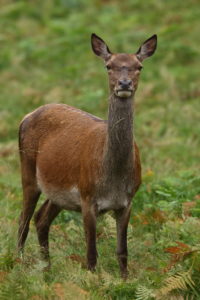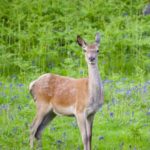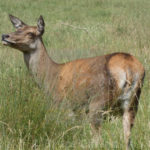elder women
Older Women Take the Lead
 One of my favorite anti-ageism stories comes from anthropologist Margaret Mead who described the key role played by the “old does” of the red tailed deer herds in Alaska in ensuring the herd’s survival. The old does take the lead in perilous times for the herds. We are now seeing growing numbers of women, including many older women, take the lead as our own human species survival is so critically at risk.
One of my favorite anti-ageism stories comes from anthropologist Margaret Mead who described the key role played by the “old does” of the red tailed deer herds in Alaska in ensuring the herd’s survival. The old does take the lead in perilous times for the herds. We are now seeing growing numbers of women, including many older women, take the lead as our own human species survival is so critically at risk.
Below are two quotes from authors who heard Margaret tell her story many years ago. It is more relevant than ever in today’s times.
 First, from Joan Erikson, in her book Wisdom and the Senses:
First, from Joan Erikson, in her book Wisdom and the Senses:
“In the fifties when we worked in Stockbridge, we attended a lecture presented by Margaret Mead to a small audience of psychiatrists and guests. Her topic was the role of postmenopausal red-tailed deer which, she said, had been observed in the far north. In their old age, when all the old bucks had been killed off in contentious fighting over priorities and in territorial skirmishes, the females became the oldest survivors.
In time of drought, these old does could remember where once long ago under similar circumstances water sources had been found. When spring came late, they recalled sunny slopes where the snows melted early. They knew how to find sheltered places where blizzards could be waited out.
Under such circumstances, they took over the leadership of the herd. Old age, she postulated, has a unique contribution to make when well-stored, long experience and practical knowledge, fortitude, and hope are required. Women throughout time have practiced and nurtured these skills for community living and they serve ongoing species survival.”
And from Robert L Weber and Orsborn, The Spirituality of Age:
“What is the value of aging, to ourselves and to society? Let’s begin with a story about the value of aging to society. In the 1950’s anthropologist Margaret Mead delivered a memorable lecture that has relevance to our consideration. Her discussion centered on the role of postmenopausal red-tailed deer in their herd.
From the outside these old does appeared to have no value. Their male counterparts, charged with protection of the herd, had all been killed off over the years. It would be natural to think of the elderly who remained as burdens to the herd. But this was not the case.
Mead goes on: ‘In time of drought, these old does could remember where once, long ago, under similar circumstances, water sources had been found. When spring came late, they recalled sunny slopes where the snows melted early. They knew how to find shelter, places where blizzards could be waited out. Under such circumstances, they took over the leadership of the herd.’
Margaret’s story goes straight to the heart of the question at hand, standing in stark contrast to contemporary society: a culture that still tends to think of aging as a problem, marginalizing, ignoring, and even reviling the elderly. But just as the old does knew where to find sunlight, we who are growing old have knowledge and wisdom to share with others, inner reserves of resources upon which to call that are often dismissed too readily by those who would benefit the most.”